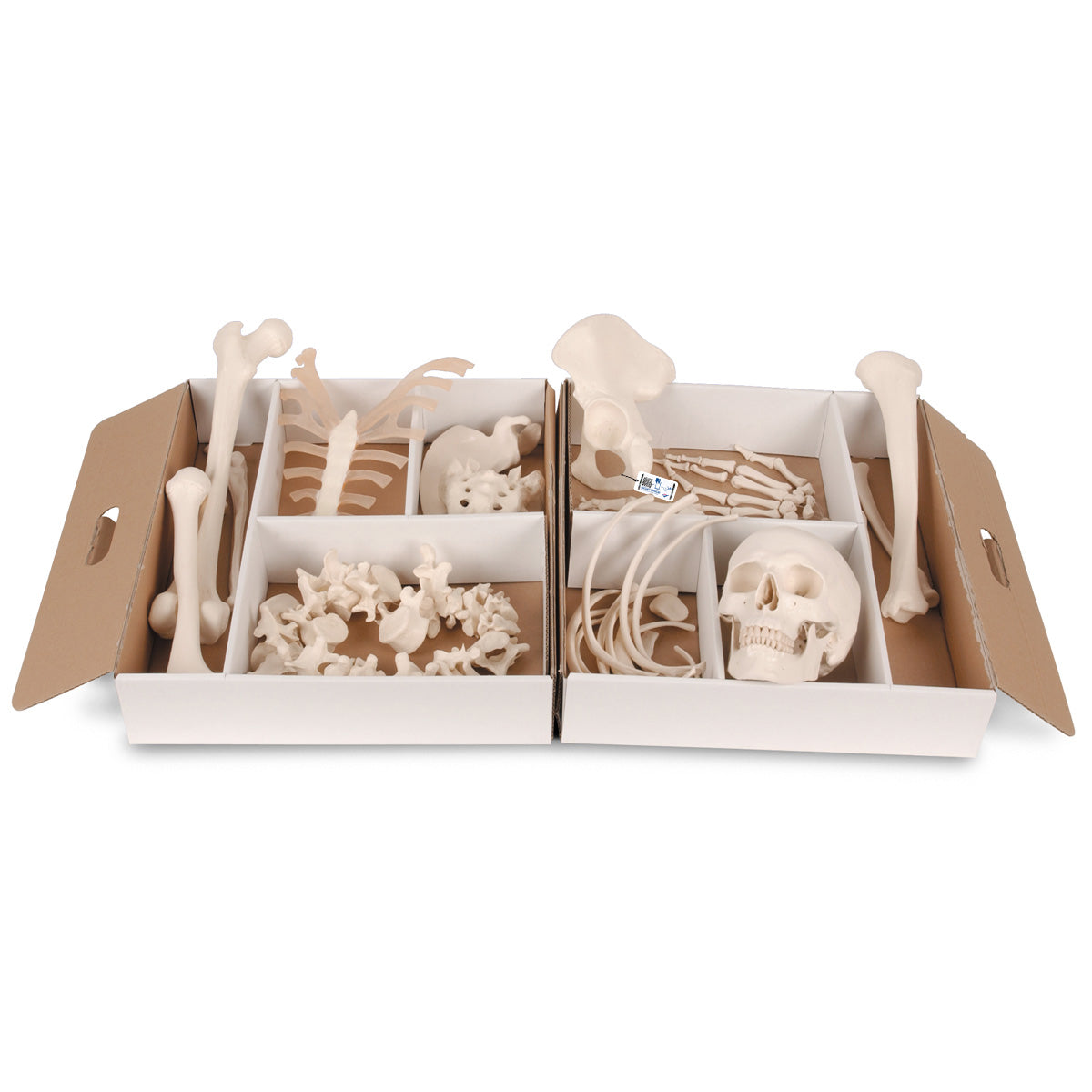SKU:1020155
Classic bone set for many purposes. Supplied in a compartmentalized cardboard box with handle
Classic bone set for many purposes. Supplied in a compartmentalized cardboard box with handle
Out of stock
this product is made to order. To place an order please call or write us.Couldn't load pickup availability
This bone set can be used for many purposes - e.g. for teaching purposes. That's why we call it "classic". There are two variants;
- hand and foot together via steel wire.
- hand and foot assembled via nylon.
The bone set includes 30 bones, which are molded in plastic. They are delivered in a compartmentalized cardboard box with handles, which measures 48.5 x 27 x 42.5 cm. The total weight is approximately 3.9 kg.
NB: If you are a student on the physiotherapist course, the occupational therapist course, the psychomotor course or a similar course where the anatomy of the musculoskeletal system must be learned, we would also recommend the bone set with very lifelike bones developed for study use. Very precise reproductions of anatomical partial waists are seen on the bones, which is crucial when the origin and attachment of the skeletal muscles must be learned or rehearsed.
If, on the other hand, you are a medical student, we would instead recommend our German-made bone set, which is used on medical courses.
Anatomical features
Anatomical features
Anatomically speaking, the set of bones includes the bones that make up the human skeleton as well as the 32 teeth and rib cartilage. The compartmentalized cardboard box contains the following:
A classic skull where the skull cap ("the top") can be removed and the lower jaw bone ("the mandible") is held in place via a relatively long metal spring, which is attached via screws to the mandible and palatine bone. The mandible can be moved
A unified vertebral column (columna vertebralis), which is held together via a nylon cord from the 1st cervical vertebra (C1/atlas) to the 5th lumbar vertebra (L5) as well as the sacrum (os sacrum) and coccyx (os coccygis)
Hyoid bone (os hyoideum), sternum (sternum) incl. cartilage and ribs from the right side
The collarbone (clavicle), shoulder blade (scapula), upper arm bone (humerus), elbow bone (ulna) and coil bone (radius) from the right side
Right hand (script) assembled via steel wire. Therefore, the bones cannot be detached from each other
The hip bone (os coxae), the thigh bone (femur), the kneecap (patella), the shin bone (tibia) and the calf bone (fibula) from the right side
Right foot (pedis) assembled via steel wire or nylon depending on variant.
NB: Paired bones (e.g. humerus and hip bone) are thus only represented as one bone in the set. Unfortunately, we cannot guarantee that these bones are from the right side.
The level of detail on the bones is good. The scope of "osseous landmarks" includes large details such as the tuberculum majus and minus on the humerus (upper arm bone). A number of minor details have been omitted.
The skull shows the individual bones that make up the braincase and facial skeleton. In addition, the human skull contains many holes and channels containing vessels and nerves. Overall, there are connections between the braincase and the neck, to and from the eye socket, to and from the pterygo-palatine fossa and to and from the nasal cavity.
Many of the most important holes and canals are visible on the skull, but not all.
Product flexibility
Product flexibility
Clinical features
Clinical features
Clinically speaking, the bone set is ideal for understanding many diseases, disorders and disorders in the skeleton.
Share a link to this product



A safe deal
For 19 years I have been at the head of eAnatomi and sold anatomical models and posters to 'almost' everyone who has anything to do with anatomy in Denmark and abroad. When you shop at eAnatomi, you shop with me and I personally guarantee a safe deal.
Christian Birksø
Owner and founder of eAnatomi ApS


